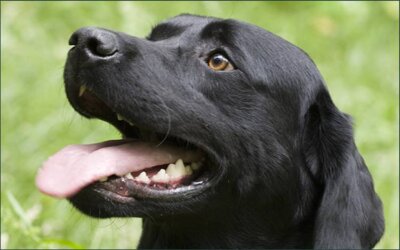
We rely on our dogs’ wagging tails to help us diagnose their moods, needs and what they want to tell us. But are some dogs losing their ability to wag their tails?
Limber Tail – also known as ‘broken tail’, dead tail and broken wag comes on suddenly leaving dogs’ tails apparently paralysed; dogs’ tails become stiff at the base but floppy nearer the tip, sometimes making it difficult for a dog to sit comfortably.
Most common in sporting and working dogs
Limber Tail is most common in sporting and working dogs including Labrador and Golden Retrievers, Setters, Pointers and Foxhounds. Appearing most often after heavy, outdoor work or swimming on a cold day – which accounts for other names for this condition including cold water tail and swimmer’s tail.
Vets diagnosing Limber Tail say that injury to the coccygeal muscles near the base of the tail, rather than damage to the tail’s bones or spinal injury, is the cause of the condition.
In the first large-scale study, veterinary laboratory scientists at the Roslin Institute and Royal School of Veterinary Studies at Edinburgh University received questionnaires from owners reporting Limber Tail in their dogs.
Possible genetic link with affected dogs
Vets found that not all affected dogs had been swimming prior to the onset of the condition, but they were more likely to live in northern areas of the UK – apparently supporting the link to colder weather conditions. Animals unaccustomed to vigorous activity suddenly plunged into cold, strenuous, outdoor work might also be more at risk.
But vets also found a possible genetic link with affected dogs more likely to be related to each other rather than to unaffected animals.
Affected dogs should be rested until the tail returns to normal
Fortunately, Limber Tail symptoms though distressing when first encountered are largely temporary, with almost all affected dogs returning to normal within a week or so; similar to a sprain or muscle strain in humans.
Affected dogs should be rested until the tail returns to normal, though a visit to your vet is recommended so that treatment to ease the soreness, or examination for any more serious injury, might be considered.
Your vet is best placed to examine and treat your dog for Limber Tail. Supported by the resources of well-equipped vet lab, further diagnostic tests including soft tissue scans and bone visualisation techniques might be recommended to support your dog on its way to a full, tail-wagging recovery.

